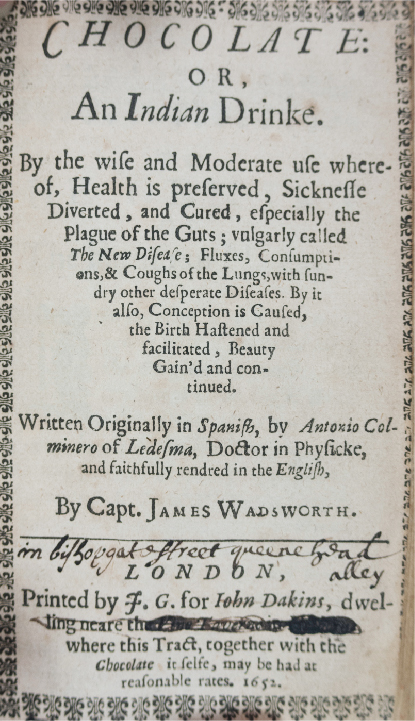Britain's love affair with chocolate got off to a shaky start in 1579. English buccaneers burned a captured Spanish shipload of cacao, thinking it was sheep droppings. But in time – a long, long time – cacao took hold.
A document titled A Curious Treatise of the Nature and Quality of Chocolate was translated from original Spanish and published in England in 1640. It was produced for Viscount Conway, a well-known gourmet with a particular interest in foreign delicacies, and led to chocolate being introduced to the English court. At least King Charles I had something to comfort him during the civil war against parliament up until his beheading in 1649.
In 1650 cocoa was first advertised in England, in Oxford, where Cirques Jobson sold coffee and chocolate in the first coffee house in the country.
Two years later a second edition of the document was published by Captain James Wadsworth as Chocolate. Or an Indian Drinke reporting that chocolate could be purchased "at reasonable rates" from the bookseller John Dakins in Holborn.
Cocoa was in short supply, with most of the harvest eventually finding its way to Spain. But Cromwell's forces took Jamaica from Spain in 1655, including cacao plantations which had been established there some 17 years previously, and chocolate finally came to market in Britain in larger quantities.

In 1662 the physician Henry Stubbe reported a specifically English way of drinking chocolate that differed from "the plain Spanish way of mixing Chocolata with water." This involved using milk instead of water, or half and half, or thickening the drink by adding eggs. Using milk was said to be the usual practice in the "Chocolata-houses."
Stubbe sold his own chocolate under the name Chocolata-Royal (it having been presented to the King), as well as a rather cheaper Ordinary Chocolata.